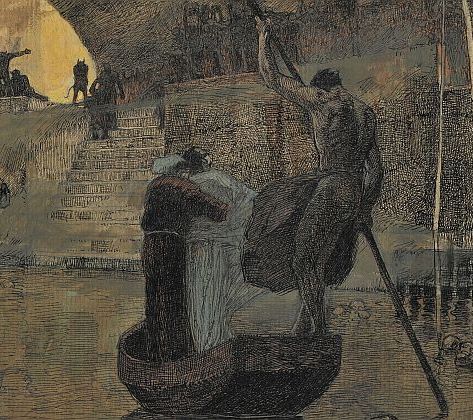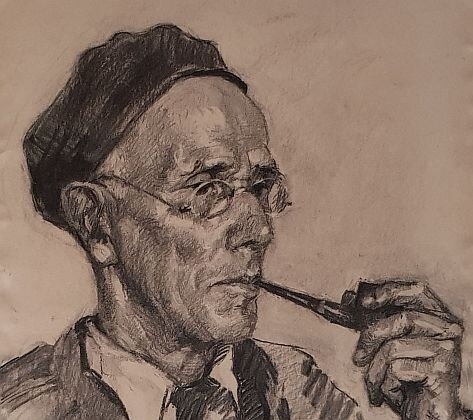Dante’s The Divine Comedy in Mirko Rački’s Drawings
/ From the Holdings of the Department of Prints and Drawings of the CASAExactly seven hundred years since the death of the great Italian literary genius Dante Alighieri, the Department of Prints and Drawings with its exhibition Dante’s The Divine Comedy in Mirko Rački’s Drawings, whose thematic concept outlines literary and art historical referential factors, joins the national and European museological and literary celebrations of this important date. Croatian Dante scholar and translator of The Divine Comedy Izidor Kršnjavi wrote in the preface to the second edition of Dante’s Inferno in 1919: “All that was thought, felt and done in the 13th and early 14th century, all the beauty and all the horror, all the aspirations, joys and sufferings are reflected in Dante’s comedy. In the 14th century it was called ‘the sea of wisdom’ and ‘divine’. Indeed it could well be called a sea of love and hate, a sea of fortune and misfortune, a sea of joy and pain, a sea of the most dignified and most horrific human sentiments. Dante’s The Divine Comedy is a historical image of his age in the perfect poetic form. The great seraphine love bursts the strongest from his verses. He was not called a Franciscan poet for no reason.” (I. Kršnjavi, 1919: 21)
Croatian Dante scholar and translator of The Divine Comedy Izidor Kršnjavi wrote in the preface to the second edition of Dante’s Inferno in 1919: “All that was thought, felt and done in the 13 th and early 14 th century, all the beauty and all the horror, all the aspirations, joys and sufferings are reflected in Dante’s comedy. In the 14 th century it was called ‘the sea of wisdom’ and ‘divine’. Indeed it could well be called a sea of love and hate, a sea of fortune and misfortune, a sea of joy and pain, a sea of the most dignified and most horrific human sentiments. Dante’s The Divine Comedy is a historical image of his age in the perfect poetic form. The great seraphine love bursts the strongest from his verses. He was not called a Franciscan poet for no reason.” (I. Kršnjavi, 1919: 21)
Mirko Rački drew a series of illustrations for the Croatian editions of The Divine Comedy after he was motivated and commissioned by his mentor and patron Izidor Kršnjavi, the translator of Dante’s epic, whose historical, philosophical and theological insights and explanations of allegorical ‘signifiers’ in the introduction to each canto of the ‘grand poem’ served as a conceptual backbone for composition units. Rački’s 1911 illustration cycle kept in the collection of the Department of Prints and Drawings in its entirety has not been exhibited for over forty years, since the exhibition held in our institution in 1979. Drawn out of the Department’s holdings darkness, these iconic invaluable works shed a new light and valorise the artistic disposition of Mirko Rački and his pioneering role of the torch-bearer of European modernist trends in Croatian 20 th century art corpus.


